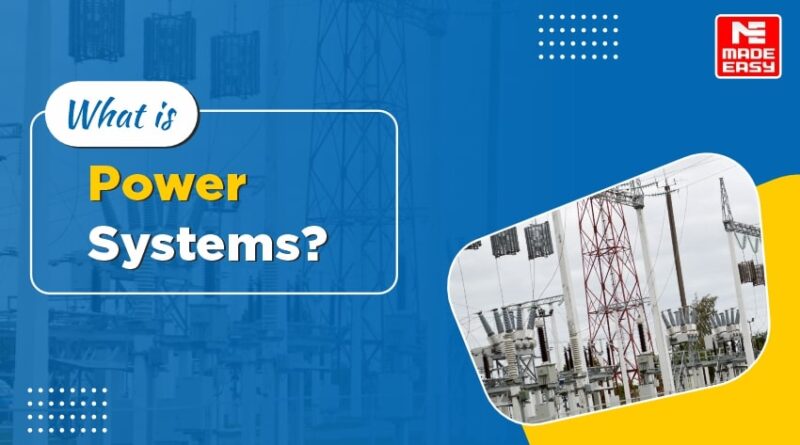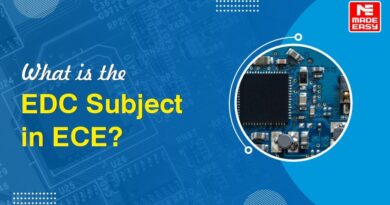What is Power Systems?
Electrical Engineering
What is Power Systems?
Out of all the forms of energy, electric energy is the most important one as it can be generated efficiently, transmitted easily and utilized ultimately at a very reasonable cost. The components needed for generation, transmission, and large scale distribution of electric energy form a huge complex system termed as Electric Power Systems. Power system is the branch of electrical engineering where we study in depth for its design, operation, maintenance and analysis.
An electric power system is a network of electrical components used to supply, transmit and use electric power. A power system is the network that supplies a region’s home and industry with power for sizable regions. This power system is called ‘the grid’ and can be broadly divided into the generators that supply the power, the transmission system that carries the power from the generating stations to load centers and the distribution system that feeds the power to nearby homes and industries.
Small power systems are also found in industry, hospitals, homes and commercial buildings. The majority of three systems rely upon ‘three-phase AC power’ the standard for large scale power transmission and distribution across the modern world. Specialized power systems that do not rely upon the three-phase AC power are found in aircraft, electric rail systems, automobiles etc.
Given below are the links to some major and important topics related to power systems that will be beneficial for aspiring electrical engineers:
Key Concepts:
Elements of power systems
There are three elements associated with elements of power systems:
- Generating: Electrical energy is generated by conversion of energy in different forms from different natural sources such as pressure head of water, kinetic energy of blowing wind, chemical energy of fuels and nuclear energy of radioactive substances into electrical energy.
- Transmission: Electrical transmission is the process of delivering generated electricity – usually over long distances – to the distribution grid located in populated areas.
- Distribution: The system by means of which electrical energy is conveyed from bulk power source or sources to the consumers is known as distribution system. Distribution system is an integral part of any electric power system.
Online Courses for Power Systems (EE):
Electrical engineering branch can witness a rigorous competition especially while preparing for government engineering exams such as GATE, ESE, SSC JE and many others. While government jobs bring along a stable career and job security, it is not easier to crack the exam. Such exams expect hard work, dedication and a well strategic planning and study routine. MADE EASY is here to support your preparation journey of GATE, ESE and PSU exams. Our courses are curated by renowned experts that focus on providing quality lectures from the basic level to advanced level. MADE EASY provides aspirants the right guidance to maximize their performance and achieve success. Candidates from electrical engineering and electronics engineering branches are advised to visit on the links given below to know more about courses that include key concepts of engineering branches taught from basic level and prepare aspirants for the future.
- GATE : 1 Year Foundation Course
- ESE+GATE : 1 Year Foundation Course
- GATE + SES (GS) : 1 Year Foundation Course
- GATE & SES (GS) 2025-26 Live Online Foundation Course
- ESE + GATE + SES (GS) 2025-26 Live Online Foundation Courses
Recommended Books for Power Systems
Books are still an essential part of learning as they offer in-depth knowledge in various topics. Learning books are well structured and provide comprehensive understanding making them invaluable for students and lifelong learners. MADE EASY Publications is one such platform for students who are looking for high quality and well structured content for their preparation. Our platform consists of government engineering exams books which are curated by a team of experts and experienced authors. Electrical engineering aspirants are suggested to click on the links mentioned below to learn more in depth about power systems:
- GATE-2025: Electrical Engineering Previous Year Solved Papers
- ESE 2025: Preliminary Exam: Electrical Engineering Objective Solved Paper Vol-1
- A Handbook on Electrical Engineering
As we have linked some of the key concepts of the power systems, we highly suggest our readers to visit the links given below to read other topics related to electrical engineering:
FAQs:
1. How many faults are there in a power system?
Ans. There are two types of faults occurring in power systems: Symmetrical faults and Unsymmetrical faults.
2. What are the advantages of SF6 CB?
Ans. There are several advantages of SF6 CB such as It gives a noiseless operation, Current chopping is minimum in SF6 breakers, Its performance is independent of ambient conditions etc.
To know more about advantages click on the link: Advantages of SF6 CB
3. What is the skin effect of power?
Ans. In an AC system, there is non-uniform distribution of current in a conductor i.e. most of the current is distributed on the outer surface because of non-uniform distribution of flux-linkages. This effect is called the “Skin Effect”.
4. What is the difference between composite and bundled conductors?
Ans. The basis difference is that the sub-conductors of a bundled conductor are separated from each other by a constant distance varying from 0.2 m to 0.6 m depending upon designed voltage and surrounding conditions throughout the length of the line with the help of spacers whereas the wires of a composite conductor touch each other. The bundled conductors have filter material or air space inside so that the overall diameter is increased.
5. What do power systems engineers do?
Ans. Power system engineers design, develop, and maintain electrical systems while ensuring they operate efficiently and safely.



